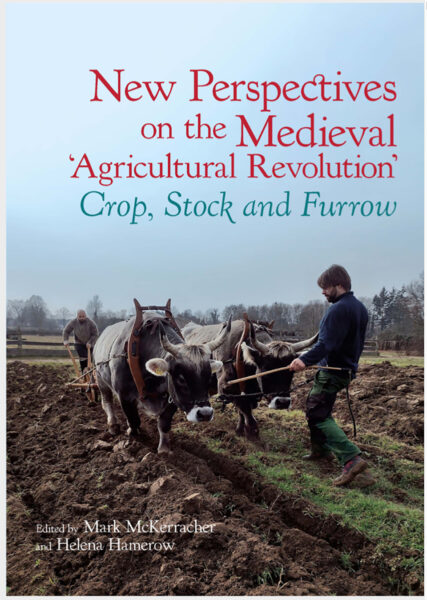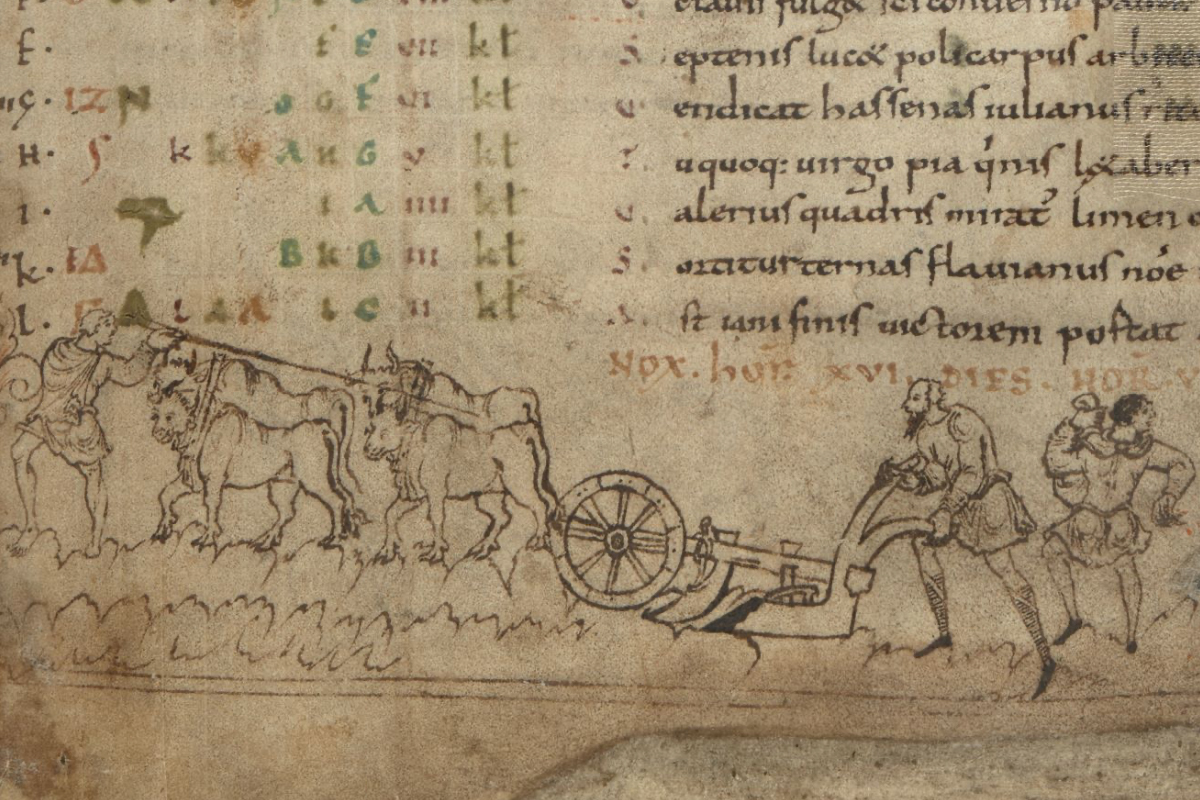Between 800 and 1200 medieval Europe experienced a warmer climate. This fertile period fed the growth of populations, towns and markets. New book explores the role of new technologies – and especially the mouldboard plough
New Perspectives on the Medieval ‘Agricultural Revolution’. Crop, Stock and Furrow.
By Helena Hamerow and Mark McKerracher
Liverpool University Press 2022
Open Access
ABSTRACT:
 Across Europe, the medieval period between c. 800 and 1200 saw the advent of new ways of cereal farming, which fed the growth of towns, markets and populations, but also fuelled wealth disparities and the rise of lordship. These developments have sometimes been referred to as marking an ‘agricultural revolution’, yet the nature and timing of these critical changes remain subject to intense debate, despite more than a century of research.
Across Europe, the medieval period between c. 800 and 1200 saw the advent of new ways of cereal farming, which fed the growth of towns, markets and populations, but also fuelled wealth disparities and the rise of lordship. These developments have sometimes been referred to as marking an ‘agricultural revolution’, yet the nature and timing of these critical changes remain subject to intense debate, despite more than a century of research.
The papers in this volume represents the proceedings of a conference held in December 2020. The idea grew out of a project funded by the European Research Council and based on the Universities of Oxford and Leicester: Feeding Anglo-Saxon England: the Bioarchaeology of an Agricultural Revolution /FeedSax).
The papers demonstrate how the combined application of cutting-edge scientific analyses, along with new theoretical models and challenges to conventional understandings, can reveal trajectories of agricultural development which, while complementary overall, do not indicate a single period of change involving the extension of arable, the introduction of the mouldboard plough, and regular crop rotation. Rather, these phenomena become evident at different times and in different places across England throughout the period, and rarely in an unambiguously ‘progressive’ fashion.
Presenting innovative bioarchaeological research from the ground-breaking Feeding Anglo-Saxon England project, along with fresh insights into ploughing technology, brewing, the nature of agricultural revolutions, and farming practices in Roman Britain and Carolingian Europe, this volume is a critical new contribution to environmental archaeology and medieval studies in England and beyond.
Especially, the combined insights from research and experimental archaeology in both Britain and Germany – and published here for the first time – yield important new information about so-called “Mouldboard-Plough-Package”.
CONTENTS:
Preface
I. Unpacking the ‘Mouldboard Plough Package’: The Feeding Anglo-Saxon England Project
The ‘FeedSax’ Project: Rural Settlements and Farming in Early Medieval England
- Lessons from Laxton, Highgrove and Lorsch: Building Arable Weed-Based Models for the Investigation of Early Medieval Agriculture in England
- Understanding Early Medieval Crop and Animal. Husbandry through Isotopic Analysis
- Agricultural Land Use in Central, East and South-East England: Arable or Pasture?
Innovation, Technology and Social Change: The Adoption of the Mouldboard Plough and Its Impact on Human–Animal Relationships
II. Revolutions Revisited: New Perspectives on Agricultural Development
Cattle and Tillage in Early Medieval Europe: First Results from the Lauresham Laboratory for Experimental Archaeology, Germany
- Prospect and Protect: Syntironomy and Cereals in Early Medieval England
- The Precursor to the Revolution? Current Understandings of the Agrarian Economy of Roman Britain
- An Agro-Social Revolution in a Mid Saxon Village: Making Sense of the Sedgeford Excavations
- Malting, Brewing and Beer in Anglo-Saxon England. Mid Saxon Sedgeford: A Case Study
- The ‘Cerealization’ of Continental North-West Europe, c.800–1200
- Agriculture, Lords and Landscape in Medieval England
AUTHORS and EDITORS:
Contributors: Amy Bogaard; Hannah Caroe; Neil Faulkner; Emily Forster; Helena Hamerow; Matilda Holmes; Claus Kropp; Lisa Lodwick; Mark McKerracher; Nicolas Schroeder; Elizabeth Stroud; Tom Williamson.
Helena Hamerow is Professor of Early Medieval Archaeology at the School of Archaeology, University of Oxford. Her many publications include Rural Settlements and Society in Anglo-Saxon England (OUP 2012) and with D. Hinton and S. Crawford (eds), The Oxford Handbook of Anglo-Saxon Archaeology (OUP 2011).
Mark McKerracher is a Postdoctoral Researcher at the School of Archaeology, University of Oxford. His publications include Anglo-Saxon Crops and Weeds: A Case Study in Quantitative Archaeobotany (Archaeopress 2019) and Farming Transformed in Anglo-Saxon England: Agriculture in the Long Eighth Century (Windgather Press 2018)
Featured Photo:
Cotton MS Julius A VI, A calender from the 11th-12th centuries. Fol . r © British Library/Open Domain
